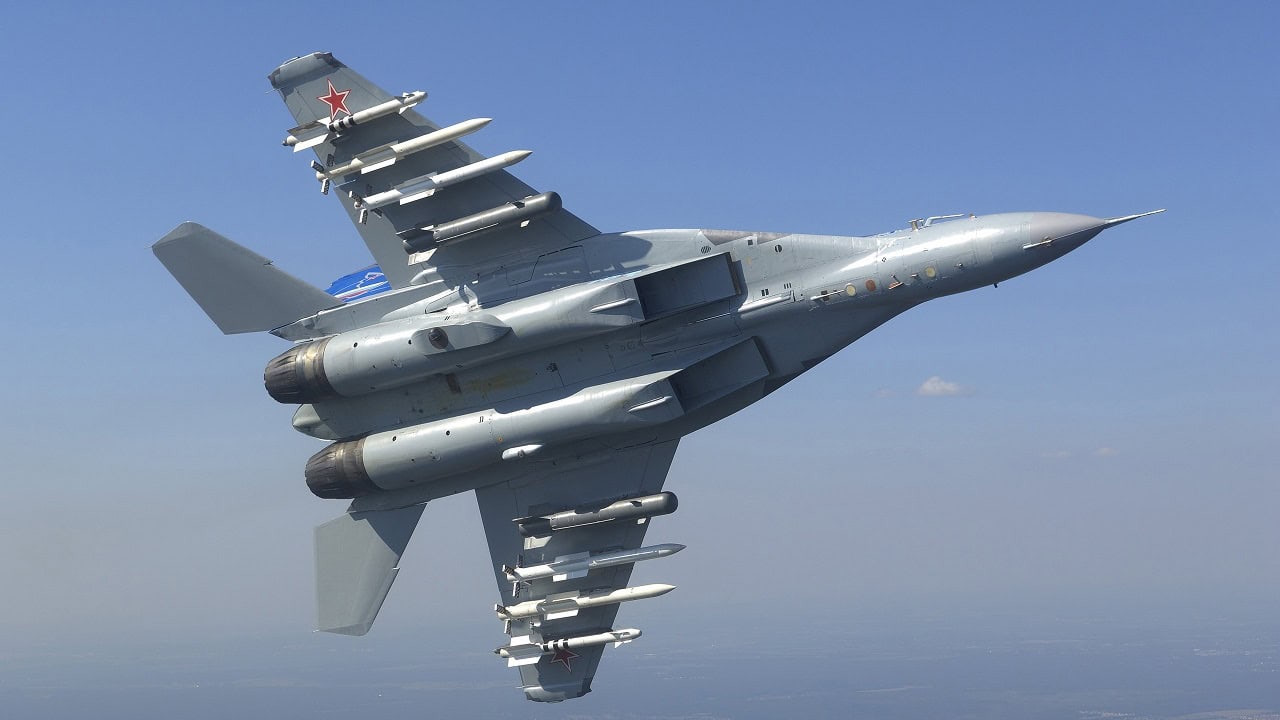The MiG-35 fighter seems, at least on paper, like a capable warplane that could be of consideration for many nations who need to upgrade their air force and might not have access to the latest and greatest from the west. And yet, Russia does not even seem interested in buying many of these planes. We explored why that is: The Kremlin has long touted the capabilities of its Mikoyan MiG-35 (NATO reporting name “Fulcrum-F”), an upgraded variant of the MiG-29K/KUB and MiG-29M/M2. The all-weather combat attack aircraft was developed by the Mikoyan design bureau, a subsidiary of the state-owned United Aircraft Corporation (UAC), to be capable of destroying enemy targets day or night, including moving and stationary ground and surface targets.
However, some experts have contended that the new “MiG-35” designation is simply a marketing ploy – and that medium-weight aircraft is still at heart little more than a fourth-generation “++” multirole fighter. More importantly, Russia continues to struggle to reach serial production with the aircraft. Since first being announced in 2007, the MiG-35’s development has been slow and it was only in 2013 that the Russian Air Force even announced it planned to order a total of just 37 of the aircraft.
Can We Believe the Hype?
Though a fourth-generation++ multirole aircraft, the MiG-35 is notable in that it features vastly improved avionics and advanced weapons systems, including the new Phazatron Zhuk active phased array radar, which can detect multiple targets. The array can reportedly track upwards of 30 targets and engage six of them simultaneously – with the forward system able to detect incoming threats from at least 50 km (30 miles). The radar system is also resistant to electronic countermeasures and has a longer detection range than previous Russian-made radar platforms.
The aircraft is fitted with two Klimov RD-33MK after-burning turbofan engines, which can enable the aircraft to reach a maximum speed of Mach 2.25, and it has a combat range of about 620 miles. With nine hardpoints, the MiG-35 can carry a selection of missiles, rockets, and bombs including Kh-31A anti-ship missiles with active radar seekers, the Kh-31P anti-radar missiles, Kh-29TE missiles, and KAB-500Kr TV-guided bombs. The aircraft is also armed with a 30mm cannon but carries just 150 rounds of ammunition.
An Export Aircraft
Russia remains the sole operator of the MiG-35, and yet, even as production has been slow, a variant has been considered for export. India had been named as a potential buyer, but given the issues with production, it now seems that New Delhi has moved on to aircraft that will actually take to the skies.
Whether the Kremlin even receives its full order of the 37 aircraft simply remains unclear at this point. As with other highly-touted hardware – notably the Sukhoi Su-57 and the T-14 Armata tank – Moscow is quick to hype a platform’s capabilities, tell the world what a threat the system would be, and then fail to follow through with large-scale deliveries. The most advanced aircraft – which the MiG-35 certainly is not – is still only good if you can produce it in numbers. Given that the Fulcrum-F is essentially an upgraded Cold War aircraft, perhaps Moscow should let this one die a quiet death and move on to something it can actually afford to produce.
Now a Senior Editor for 1945, Peter Suciu is a Michigan-based writer who has contributed to more than four dozen magazines, newspapers and websites. He regularly writes about military hardware, firearms history, cybersecurity and international affairs. Peter is also a Contributing Writer for Forbes.

